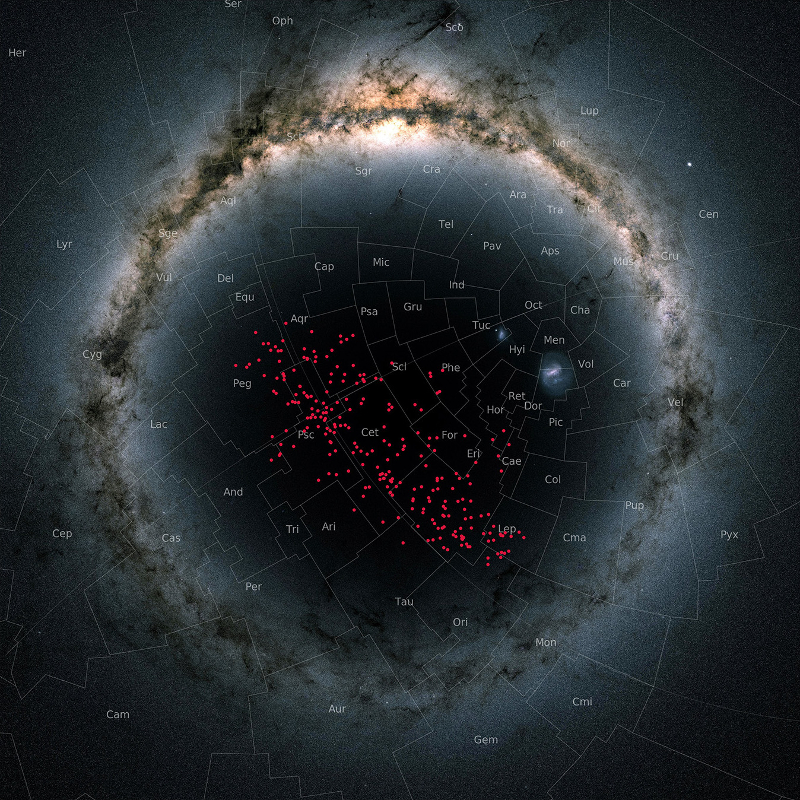| EPoS Contribution |
|
Stellar dynamics shed new light on early star formation demographics
Stefan Meingast UNIVIE, Vienna, AT | |
| Whether star formation occurs primarily in clustered environments has been a heated topic of debate for several decades. The commonly assumed claim that most stars form in clusters has oftentimes been challenged, where, for instance, young stars in the solar neighborhood show a continuous density distribution across several orders of magnitude. Recent findings may dramatically alter our picture of the dominant star formation modes, facilitated by the possibility of the identification of stellar aggregates in the full six-dimensional phase space. We uncovered the existence of the, by far, most massive stellar aggregate in the immediate solar neighborhood with an age similar to the Pleiades (120 Myr). Our finding, however, easily outmatches its cluster counterpart in terms of mass. Based on the streams' current demographics we show that it most likely has formed as a loose association. As a consequence, the streams' very existence raises the question of how many young stellar streams still remain undetected. In this contribution I will highlight our most recent findings on young co-moving groups and associations. Many of them are associated with already known clusters, but their spatial and kinematic distribution may dramatically impact our understanding of early star formation demographics, the dissolution of embedded clusters, and their early dynamical evolution. | |
 | |
| Caption: Stream members displayed in a stereographic projection centered on the Galactic South Pole. The stream has a (minimum) total mass of 2000 Msun and is by far the largest stellar aggregate in the solar neighborhood. Its detection in kinematic phase space and its very existence re-emphasizes the question of how many stars do actually form in clustered environments. | |
| Collaborators: J. Alves, UNIVIE, AT V. Fuernkranz, ARI, DE |
Key publication
Suggested Session: Galactic Dynamics |

